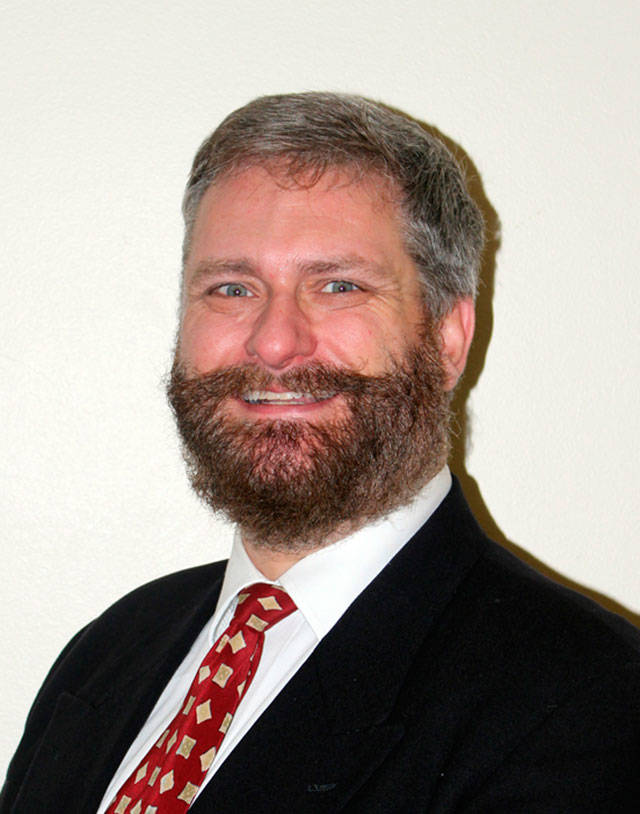This version of the story corrects the number of passengers and vehicles projected to travel between Southworth and Fauntleroy by 2040 and the increased number of vehicles projected to leave Fauntleroy every day.
To say that the Washington State Ferries draft long-range plan was a disappointment to the ferry users on the triangle route could possibly be one of the great understatements of the year.
As expected, the plan outlines the anticipated increase in users, both in terms of passengers and vehicles/drivers. WSF projects by 2040, there will be an additional 221,200 passengers on the Fauntleroy/Vashon route, an increase of nearly 25 percent over 2017. For vehicles/drivers on that route, the increase will be an additional 147,200 or 13.5 percent, or more than 400 more vehicles per day.
Southworth/Fauntleroy passengers are projected to increase by nearly 233,000 (+ 65 percent) and for vehicles/drivers by more than 107,000, a 19 percent increase, or nearly 300 more vehicles every day. In total, that’s nearly 700 more vehicles on the routes leaving Fauntleroy, where the current infrastructure struggles with today’s demand.
With this significant increase in users, one would reasonably expect a similar increase in the size of ferries, terminals and staffing for the triangle route to be recommended. The draft plans shows that WSF knows that the Fauntleroy/Vashon/Southworth route has the worst on-time performance in the system and identifies the issue, saying, “The Fauntleroy terminal currently has less than one vessel’s worth of vehicle holding space, a single vessel slip and no overhead loading for pedestrians, which causes challenges for queuing and loading the vessel for multiple destinations.” But it proposes virtually nothing to deal with it.
The good news for the triangle route is Southworth is recommended to get a second slip. Additionally, as outlined in the last long-range plan, the 90-vehicle Sealth will shortly be replaced with another 124-vehicle ferry. Both are welcome, but the bottleneck with the Fauntleroy dock means their effectiveness will be limited.
The plan points out the significant efficiencies in having a single basic ferry design for the entire system, but then states that isn’t possible.
“Loading issues on the Fauntleroy/Vashon/Southworth route restrict the vessel size that can be recommended,” the draft plan states.
So instead of dealing with the loading issues, WSF recommends spending millions on smaller ferries that will not cope with the increased demand.
When it comes to the terminal at Fauntleroy, WSF is optimistic.
“The preservation project at the Fauntleroy terminal facility is anticipated to improve operational efficiencies,” WSF states.
The “preservation project” at Fauntleroy will replace the existing trestle (the part of the dock over the tidelands) in the 2025-2027 biennium. How a dock of the same size will “improve operational efficiencies” is a complete mystery. This is all especially illogical — that the worst performing route gets little to nothing, while other terminals will have additional slips (Southworth, Friday Harbor), new terminals (Seattle, Mukilteo) and an upgraded terminal (Anacortes).
The simple fact is that spending millions on a second slip at Southworth, artificially limiting the size of the ferries and hoping for some un- described efficiencies will do nothing to help the worst performing route in the system. WSF knows the dock at Fauntleroy has to be replaced to make it safe. Now is the time to build a larger dock with a second slip.
The tidelands immediately north of the existing dock are owned by the state, and the next parcel is owned by the county. WSF could triple the width of the dock using these tidelands and not have to use eminent domain to purchase private land. Alternatively, it could lengthen the dock farther out into the water. Doubling the length of the dock would put the slips in about 60-70 feet of water (according to the NOAA chart), something that could be engineered easily.
With any construction, there would be short-term inconveniences. However let’s look at the advantages for the residents of West Seattle:
• Less congestion along Fauntleroy Way,
• Reduced pollution from idling vehicles will improve the air quality,
• Less expense from having Seattle police direct traffic.
The resistance to expanding the dock because a larger dock will mean more traffic is a fallacy: that traffic is coming anyway, based on the WSF forecasts mentioned above. Remember, for those of us dependent on the ferry, there is no other viable route.
As the pollution and expense is heavily contingent on the number of cars in line, let’s look at the increasing congestion problem if the dock size is not increased. With the current demand, traffic is regularly backed up to The Kenny. What happens when traffic gets worse? What would the predicted 640 additional cars per day do to the line? There is no parking/ferry line space when you get to around 44th and Fauntleroy Way; it’s a single lane. What happens when the line gets backed up to the traffic lights at California Avenue? Complete gridlock.
So what can users of the triangle route do to help? It’s vital that many of us comment on the deficiencies in the draft plan. You can do that online at wsflongrangeplan.com. In addition, we need to let our voices be heard by our elected officials and the head of WSF.
Head of WSF Amy Scarton: ScartoA@wsdot.wa.gov
King County Rep. Joe McDermott: joe. mcdermott@kingcounty.gov
Rep. Eileen Cody: Eileen.Cody@leg.wa.gov
Rep. Joe Fitzgibbon: Joe.Fitzgibbon@leg.wa.gov
Sen. Sharon Nelson: Sharon.Nelson@leg.wa.gov
Gov. Jay Inslee at 360-902-4111
— William Shadbolt is a real estate investor and is president of the Rental Housing Association of Washington.



